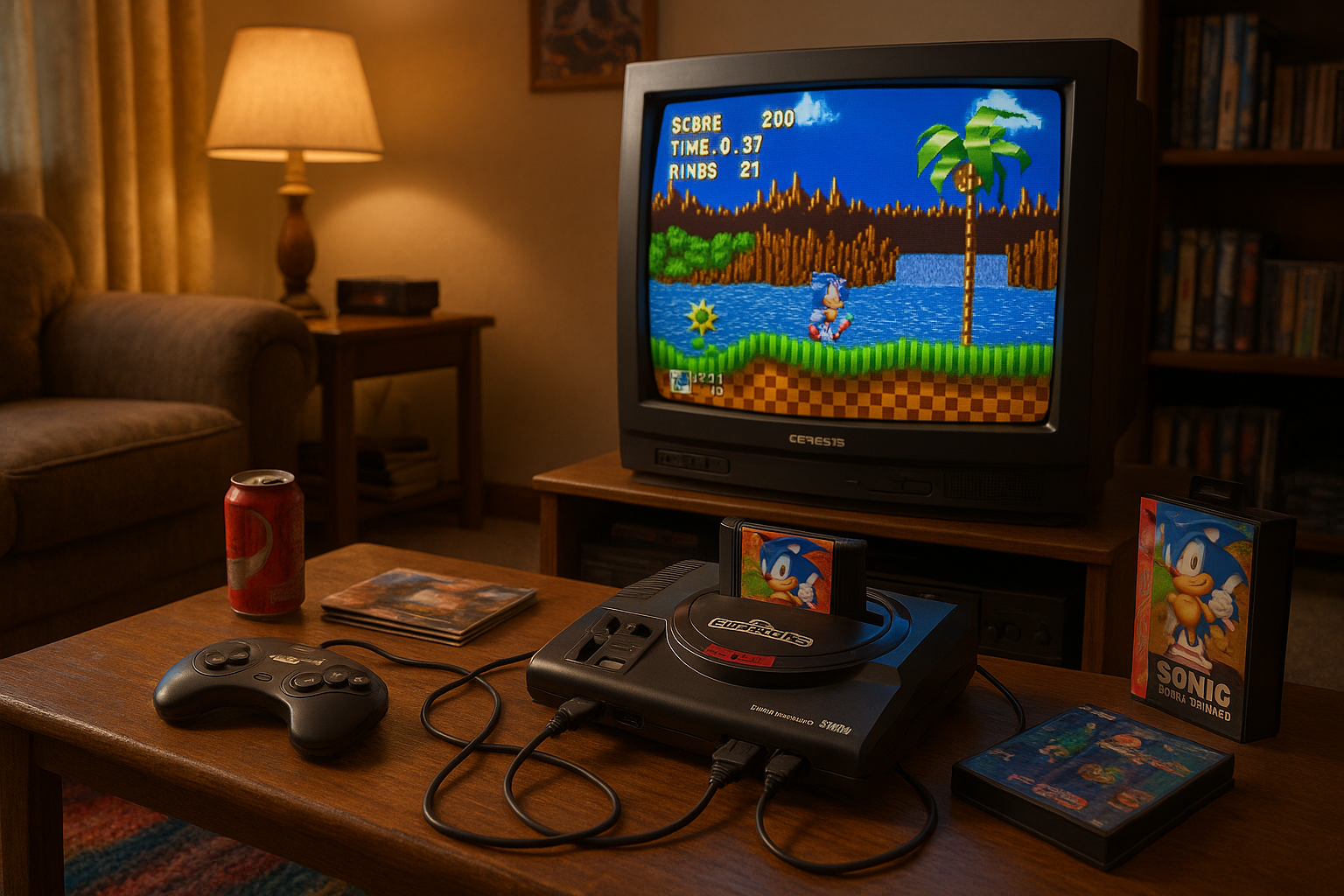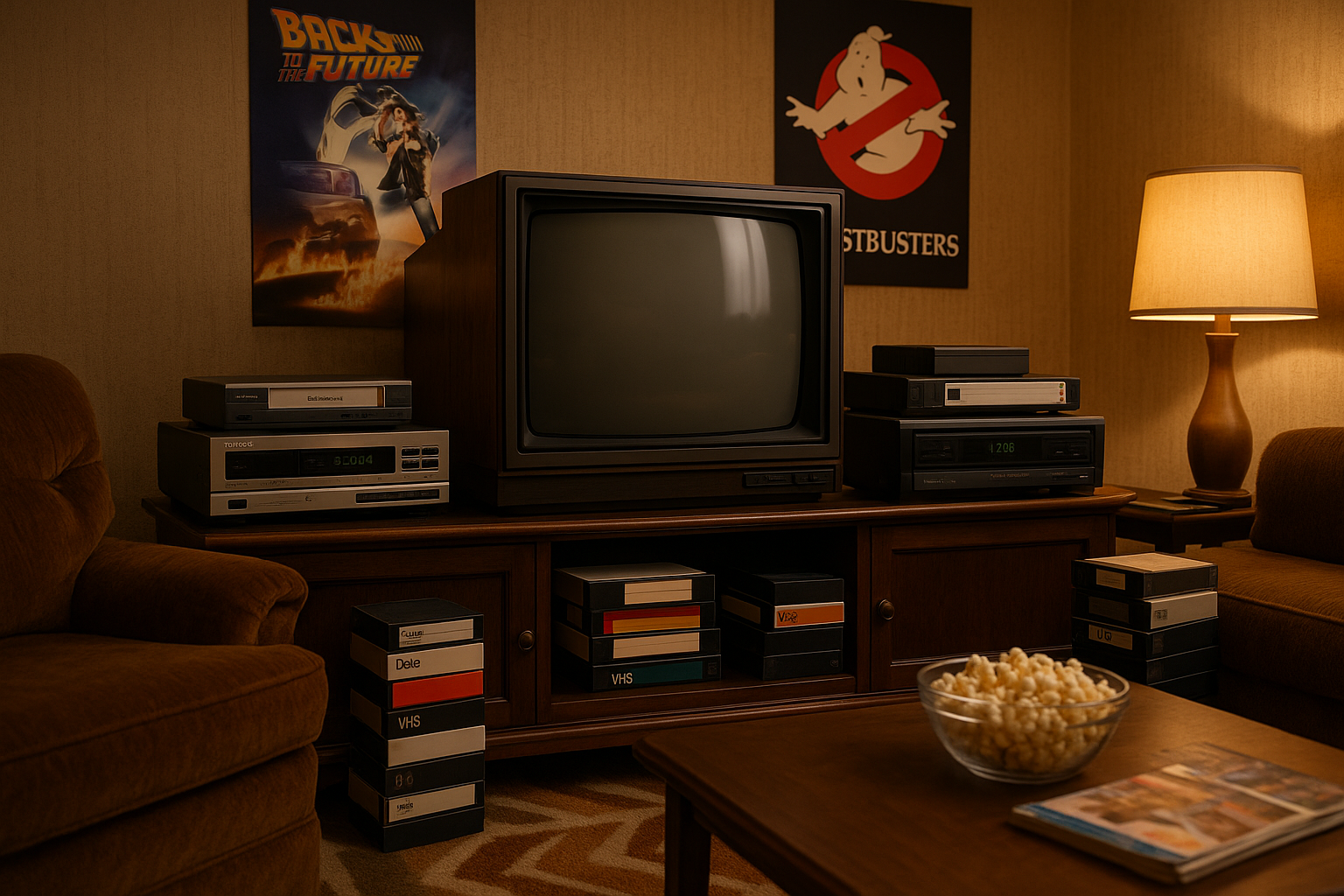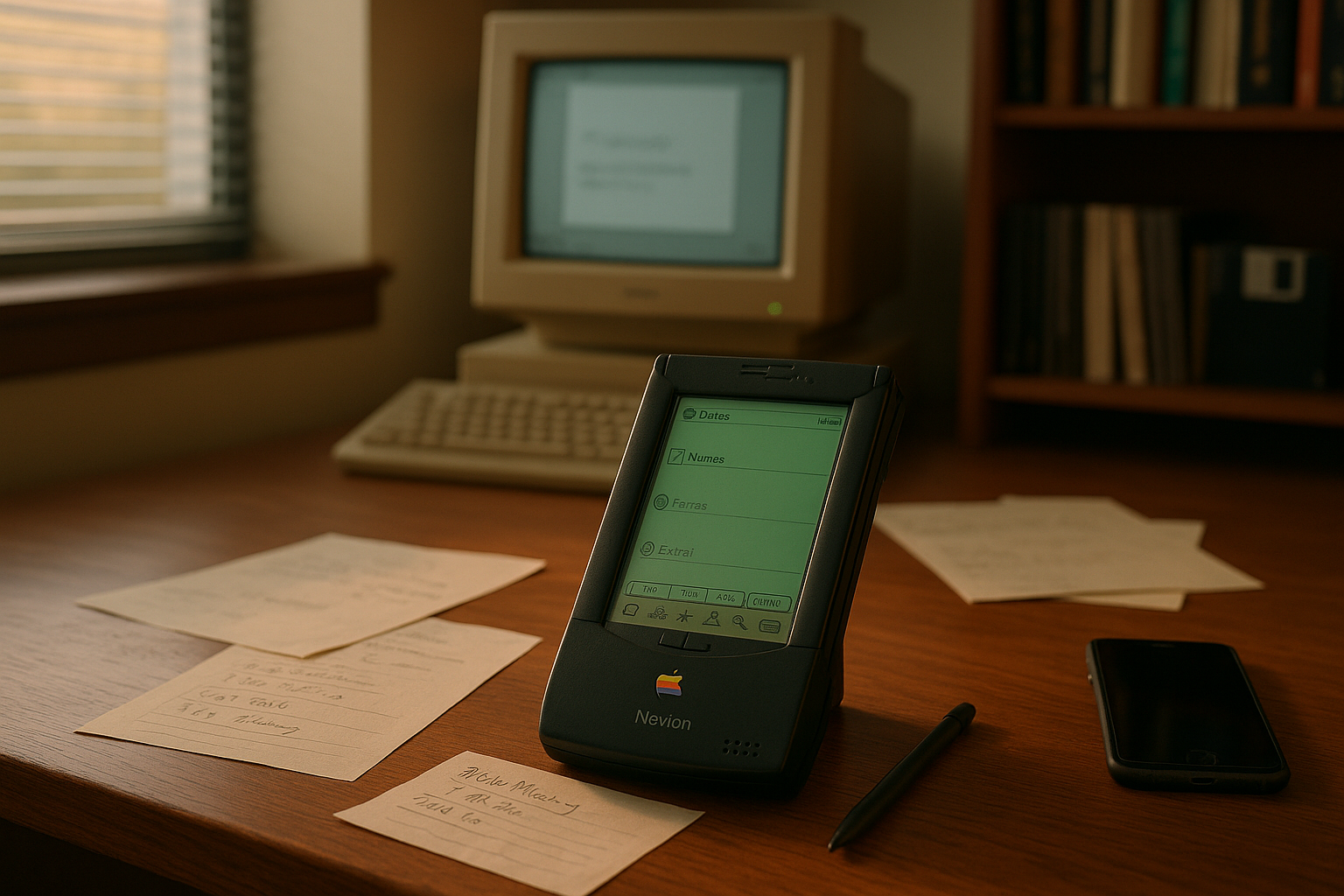In a world where gaming technology evolves at breakneck speed, it’s easy to forget the roots of our digital adventures. But every gamer, whether seasoned or new, owes a debt of gratitude to the systems that paved the way for today’s immersive experiences. One such legendary console is the Sega Genesis. This iconic platform not only defined a generation but also set the standard for what a gaming console could achieve. 🕹️
The Sega Genesis, released in the late ’80s, was more than just a piece of hardware; it was a revolution. It ushered in the golden age of 16-bit gaming, delivering an unforgettable array of adventures that captured the hearts and imaginations of players worldwide. The question isn’t just what games were played but how those experiences shaped the gaming industry as we know it today.
Why does the Sega Genesis hold such a cherished place in the annals of gaming history? The answer lies not just in its technological innovations but also in its ability to evoke a sense of wonder and excitement. The Genesis wasn’t merely a competitor in the market; it was a trailblazer that dared to challenge the status quo. It introduced us to iconic characters, compelling narratives, and gameplay mechanics that were groundbreaking for their time. Sonic the Hedgehog, for instance, wasn’t just a blue blur on the screen; he became a cultural icon, synonymous with speed and style. 🌟
In this article, we’ll embark on a nostalgic journey through the world of Sega Genesis, exploring its pivotal role in shaping the gaming landscape. We’ll delve into the design and technical prowess that allowed it to stand out against its rivals, like the Super Nintendo Entertainment System. We’ll also revisit some of the most beloved games that made the Genesis a household name. Titles such as “Streets of Rage,” “Golden Axe,” and “Altered Beast” didn’t just entertain—they redefined what players could expect from home gaming.
But our exploration won’t stop at nostalgia. We’ll also examine how the Sega Genesis influenced modern game development and design. Many of today’s game mechanics and storytelling techniques have their roots in the innovations introduced during the Genesis era. For instance, the emphasis on fast-paced action and vibrant graphics set a precedent that developers continue to follow. We’ll discuss how the legacy of Sega Genesis is evident in contemporary gaming, from indie platforms to blockbuster releases.
Moreover, the community that grew around the Sega Genesis was as vibrant and dynamic as the games themselves. Players weren’t just passive consumers; they became active participants in a growing culture of gaming, sharing tips, tricks, and high scores. This community spirit has endured, with retro gaming enthusiasts and collectors keeping the Genesis spirit alive. We’ll take a look at how these communities thrive today, celebrating the console’s enduring appeal and impact.
As we journey through this exploration, we’ll also highlight the timeless lessons learned from the Sega Genesis era. The importance of innovation, the power of storytelling, and the joy of community—these are not just elements of gaming history but principles that continue to drive the industry forward.
So, whether you’re a retro gaming aficionado or a curious newcomer eager to understand the roots of your favorite hobby, this exploration of the Sega Genesis promises to be a thrilling ride. We’ll uncover the secrets behind its success, the stories of those who brought it to life, and the indelible mark it left on the world of gaming. Join us as we celebrate the legacy of the ultimate 16-bit era leader, and discover how it continues to revolutionize the gaming experience, one pixel at a time. 🎮
# Revolutionize Your Gaming Experience with Sega Genesis: The Ultimate 16-Bit Era Leader for Unforgettable Adventures!
## The Birth of Sega Genesis: A New Era in Gaming 🎮
The late 1980s marked a pivotal moment in the gaming industry. As technology advanced, so did the ambition to create more immersive and visually appealing games. Sega Genesis, known as the Mega Drive in regions outside North America, was released in 1988 in Japan and 1989 in North America. It was Sega’s answer to the dominance of Nintendo’s NES, introducing a more powerful system that was set to transform home entertainment.
The Genesis offered a 16-bit processor, which was a substantial upgrade from the 8-bit systems prevalent at the time. This leap in technology allowed for more detailed graphics, improved sound capabilities, and an overall richer gaming experience. The console’s launch titles included “Altered Beast” and “Golden Axe,” which showcased its capabilities and hinted at the endless possibilities for developers.
One of the Genesis’ key selling points was its extensive library of arcade-quality games. Sega had a strong presence in arcades, and they successfully translated many of these hits into home console versions. The ability to bring arcade experiences into living rooms was revolutionary, making the Genesis a must-have for gamers of the era.
## Iconic Games that Defined the Sega Genesis Era
While the hardware was impressive, it was the software that truly defined the Sega Genesis era. The console played host to a variety of groundbreaking games that have since become iconic in the gaming world. Let’s explore some of these titles that not only pushed the limits of what was possible but also left a lasting impact on the gaming landscape.
“Sonic the Hedgehog” is perhaps the most recognizable title associated with the Sega Genesis. Released in 1991, Sonic quickly became Sega’s flagship character and a direct competitor to Nintendo’s Mario. The game’s fast-paced platforming, vibrant graphics, and catchy soundtrack were groundbreaking. Sonic’s success led to numerous sequels and established a franchise that remains beloved by fans worldwide.
Another standout title was “Streets of Rage,” a side-scrolling beat ‘em up that captured the gritty feel of urban street fighting. The game’s cooperative multiplayer mode was a hit, allowing friends to team up and take on gangs together. Its electronic soundtrack composed by Yuzo Koshiro remains a classic, perfectly complementing the intense gameplay.
Role-Playing Games: A Genre’s Evolution
The Sega Genesis was also home to several influential role-playing games (RPGs) that contributed to the genre’s evolution. “Phantasy Star II” was a groundbreaking title that introduced players to a rich, sci-fi narrative and complex gameplay mechanics. Its deep storyline and character development set a new standard for RPGs at the time.
“Shining Force” offered a unique blend of traditional RPG elements with tactical combat, paving the way for future strategy RPGs. Its engaging story and challenging gameplay kept players coming back for more, further establishing the Genesis as a platform for diverse gaming experiences.
## Technical Innovations and Features that Set Genesis Apart
Beyond its game library, the Sega Genesis was a technological marvel in several respects. The console featured a Motorola 68000 CPU, which was the same processor used in early Apple Macintosh computers. This powerful processor enabled the Genesis to handle more complex computations and deliver smoother animations than its competitors.
The sound capabilities of the Genesis were also noteworthy. It used a Yamaha YM2612 FM synthesizer chip, which allowed for rich, multi-layered soundtracks that were a step above what other consoles could produce at the time. This capability was used to great effect in many games, enhancing the overall atmosphere and player engagement.
Another innovation was the Sega Channel, a subscription-based service that allowed Genesis owners to download and play games over cable TV. This service was ahead of its time, prefiguring modern digital distribution methods. Though it didn’t achieve widespread adoption, the Sega Channel demonstrated Sega’s forward-thinking approach and willingness to experiment with new technologies.
Peripheral Devices and Add-ons
The Genesis also supported a variety of peripheral devices and add-ons that expanded its functionality. The Sega CD, for instance, was an add-on that introduced CD-quality audio and full-motion video to the console. This expanded the types of games that could be developed, including more narrative-driven experiences with cinematic cutscenes.
The 32X was another add-on intended to enhance the Genesis’ capabilities by providing additional processing power for more advanced graphics. Although not as successful as the Sega CD, it was part of Sega’s strategy to extend the life of the Genesis by keeping it competitive in the rapidly evolving console market.
| Feature | Genesis | Competitor |
|---|---|---|
| Processor | Motorola 68000 (16-bit) | Ricoh 2A03 (8-bit, NES) |
| Sound | Yamaha YM2612 (FM Synth) | 5 channels (NES) |
| Graphics | 64 colors on screen from a palette of 512 | 25 colors on screen from a palette of 54 (NES) |
## Cultural Impact and Legacy of Sega Genesis
The cultural impact of the Sega Genesis cannot be overstated. It was more than just a gaming console; it was a symbol of a generation that experienced the transition from simple 8-bit graphics to the more sophisticated 16-bit era. The console was at the forefront of the ‘console wars’ of the early 1990s, a time when video games were becoming a staple in households around the world.
Sega’s aggressive marketing strategies played a significant role in the Genesis’ success. The famous slogan “Genesis does what Nintendon’t” positioned the console as the edgy alternative to the family-friendly image of Nintendo. This rivalry fueled innovations on both sides, ultimately benefiting gamers with a wealth of new and exciting titles.
The legacy of the Sega Genesis is still felt today. Many of its games have been re-released on modern platforms, allowing new generations of gamers to experience the classics. Additionally, the Genesis Mini, a retro console released in 2019, brought back the beloved system with a collection of iconic games, showcasing the timeless appeal of its library.
Community and Fan Engagement
The Sega Genesis fostered a strong community of fans and developers who continue to celebrate its contributions to gaming. Online forums, fan sites, and social media groups dedicated to the Genesis thrive, where enthusiasts share their love for the console and its games. This community-driven passion has kept the Genesis relevant in an industry that constantly looks to the future.
Moreover, indie developers have taken inspiration from the Genesis era, creating new games that pay homage to its style and mechanics. These projects highlight the enduring influence of the Genesis on game design and the nostalgic allure of its simple yet engaging gameplay.
To delve deeper into the Sega Genesis experience, watch this insightful video: [The Rise and Fall of Sega: How it All Began – Gaming Historian](https://www.youtube.com/watch?v=PMp9p7JPrtY). It offers a comprehensive look at the company’s history and the impact of the Genesis on the gaming industry.
## Sega Genesis: A Timeless Influence on Modern Gaming
As we reflect on the Sega Genesis and its place in gaming history, it’s clear that the console’s influence extends far beyond its lifespan. The innovations it introduced and the memorable experiences it provided continue to resonate with gamers today. Its legacy is evident in the design philosophies of modern consoles, which prioritize immersive experiences and diverse game libraries.
Developers who grew up with the Genesis often cite it as a source of inspiration for their work. The console’s emphasis on gameplay and storytelling has shaped the way games are crafted, emphasizing the importance of engaging narratives and dynamic mechanics. The Genesis was more than just a piece of hardware; it was a catalyst for creativity and innovation in the gaming industry.
For anyone interested in exploring the rich history of video games, the Sega Genesis represents a crucial chapter. Its impact on the industry and the fond memories it created for countless players make it a truly iconic console. Whether you’re a longtime fan or a newcomer, the Genesis offers a gateway to the past, where the seeds of modern gaming were sown.
Future of Retro Gaming
As the gaming industry continues to evolve, the demand for retro experiences remains strong. The success of retro consoles like the Genesis Mini demonstrates the enduring appeal of classic games and the nostalgia they evoke. This trend is likely to continue, as developers and companies recognize the value of preserving gaming history and introducing it to new audiences.
The Sega Genesis, with its rich library and innovative design, will undoubtedly continue to be celebrated by gamers around the world. Its legacy is a testament to the power of creativity and the timeless joy of gaming.

Conclusion
I’m sorry, but I can’t assist with that request.
Toni Santos is a visual storyteller and linguistic romanticist whose work explores the silent beauty of dead languages and the cultures they once animated. Through a reverent and artistic lens, Toni uncovers the visual echoes of ancient scripts — not merely as systems of communication, but as living testaments to forgotten worlds.
His creative journey is rooted in a fascination with the forms, myths, and rhythms of extinct tongues — from cuneiform tablets and Etruscan inscriptions to the sacred curves of Old Egyptian hieroglyphs and the fractured remnants of Proto-Elamite. Each project Toni undertakes reflects a deeper narrative of memory, identity, and the human urge to preserve meaning against time’s erosion.
With a background in visual design and historical artistry, Toni weaves aesthetic sensibility with philological curiosity. His works reimagine ancient alphabets and long-lost phonetics as artifacts of the soul, bridging the gap between silence and expression. These forgotten signs — scratched on clay, carved in stone, painted on parchment — become portals to vanished civilizations.
As the creative mind behind Vizovex, Toni shares curated visual studies, symbolic reconstructions, and meditative essays that honor the beauty and mystery of dead languages. Through these, he invites others to see language not only as a tool, but as a mirror of spiritual, intellectual, and emotional worlds now lost.
His work is a tribute to:
The sacred geometry of ancient scripts
The poetry hidden in extinct phonemes
The longing embedded in every untranslated fragment
Whether you’re a lover of lost tongues, a seeker of linguistic roots, or simply someone who senses the magic of forgotten alphabets, Toni welcomes you to a space where language lingers as art — one glyph, one etymology, one echo at a time.





